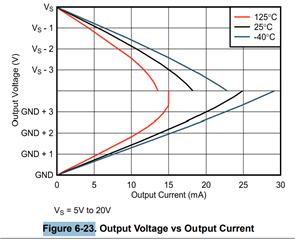Tool/software:
Hi E2E Team,
INA296A is planned to be used for current measurement with shunt resistor. Supply voltage is 5V and both reference pins are planned to be connected with GND. As per calculation the max. o/p voltage will be around 2.3V.
As per below image, the o/p current @2.3V ~ 12mA and Iq is 3.2mA max.


So, for total power consumption @5V power rail shall we consider 12mA + 3.2mA or only 3.2mA?
Regards,
Aditya

